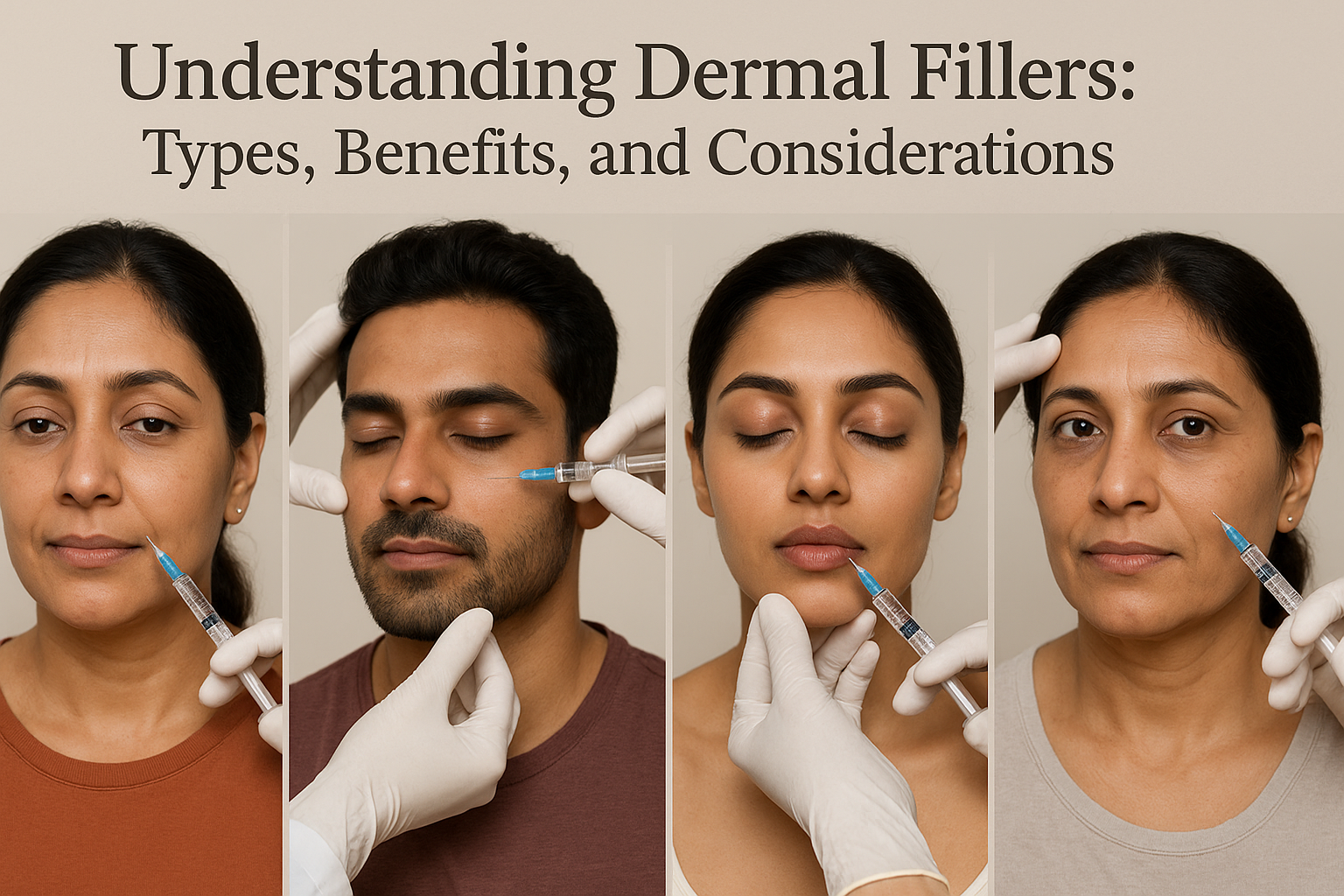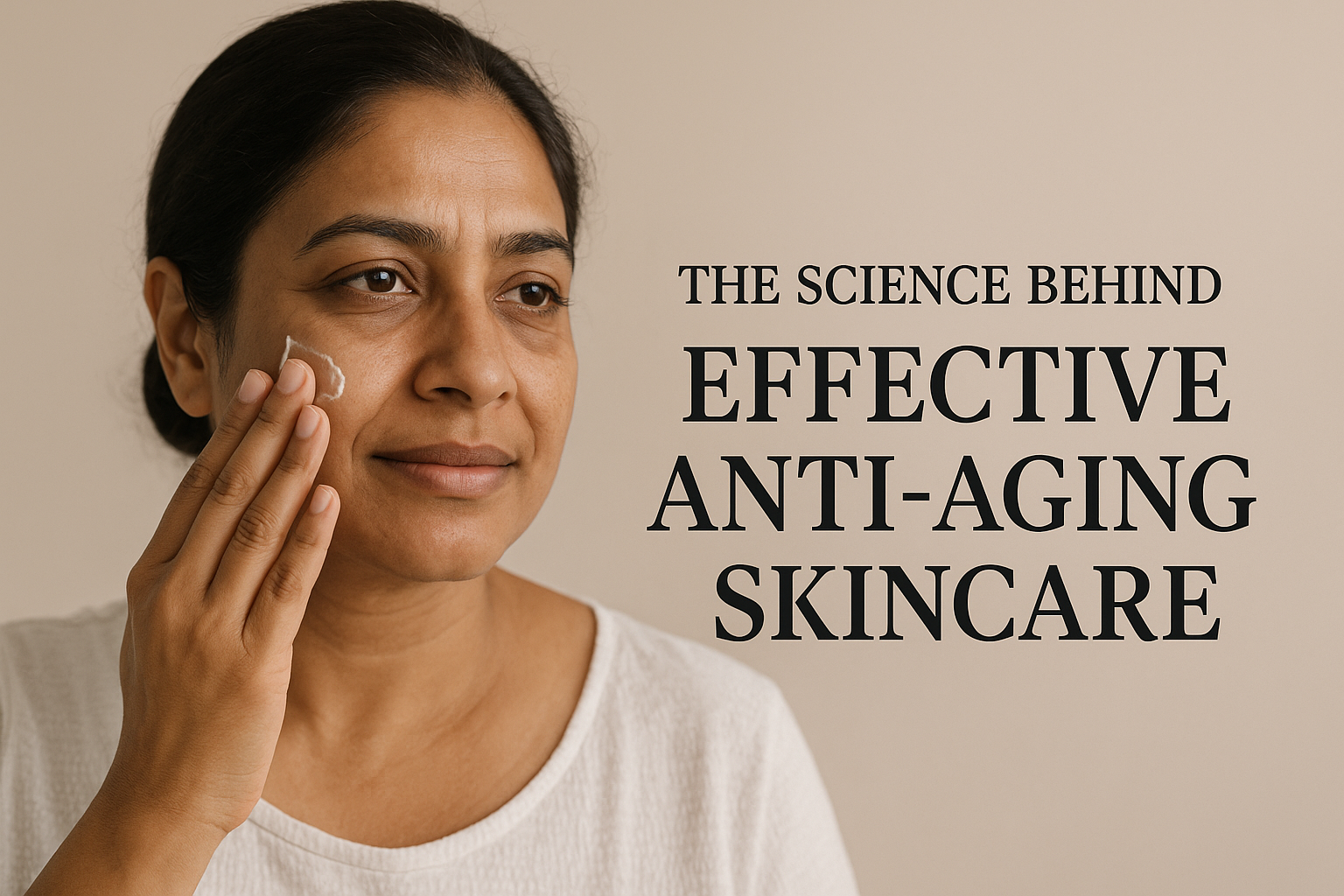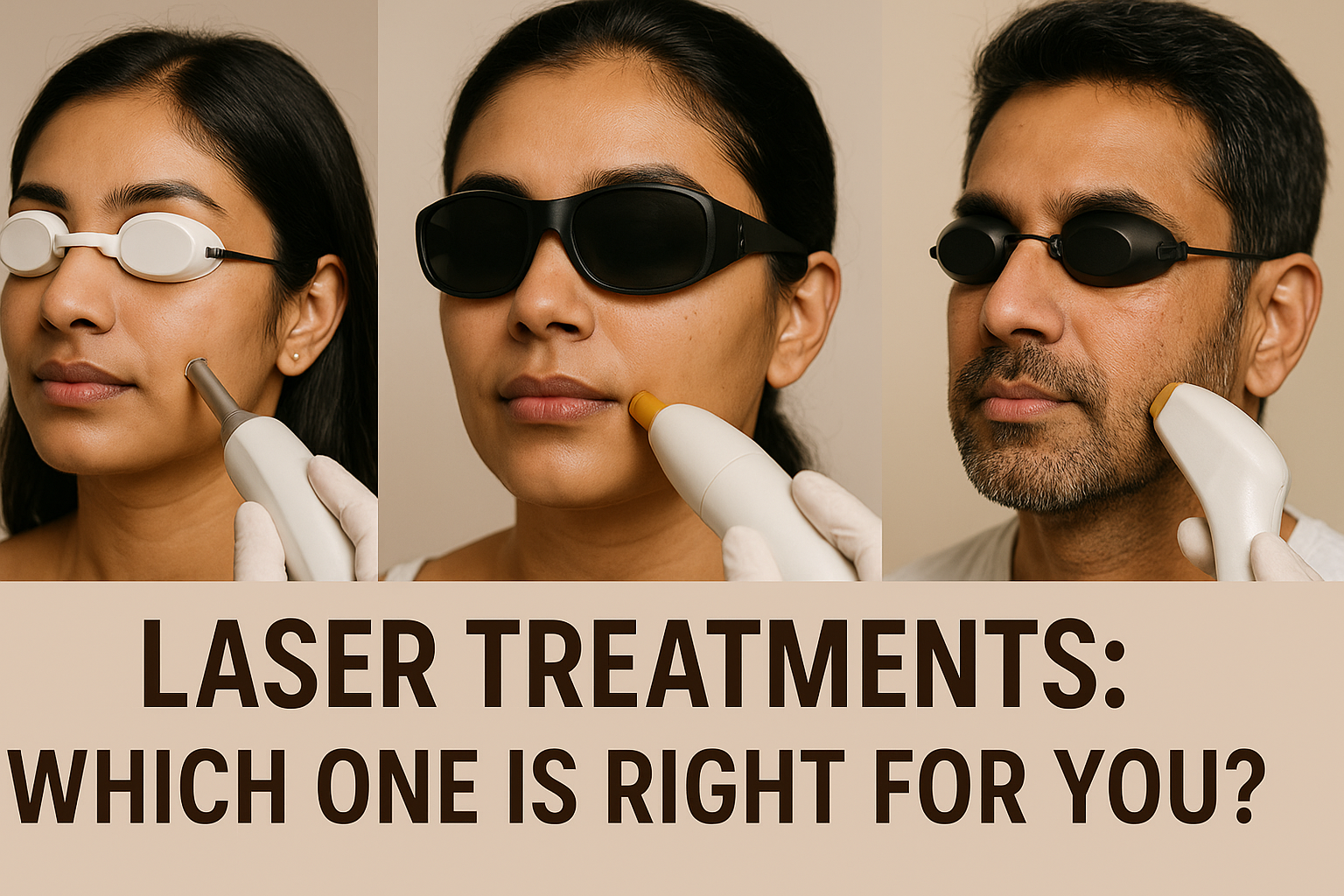Dermal fillers have revolutionized the field of aesthetic medicine, offering remarkable results without the downtime associated with surgical procedures. As a dermatologist specializing in facial aesthetics, I've witnessed firsthand how these versatile injectables can restore volume, smooth lines, and enhance facial contours with natural-looking results. In this comprehensive guide, I'll explore the different types of fillers available, their specific benefits, and important considerations to help you make informed decisions about your aesthetic journey.
Introduction to Dermal Fillers
Dermal fillers are injectable substances designed to restore lost volume, smooth wrinkles, enhance contours, and improve the overall appearance of the face. As we age, our skin naturally loses collagen, elastin, and subcutaneous fat, leading to volume loss and the formation of wrinkles and folds. Fillers address these concerns by replenishing volume and supporting skin structures.
Unlike neurotoxins (such as Botox®) that relax muscles to reduce dynamic wrinkles, fillers physically "fill in" areas of volume loss or depression. This makes them ideal for static wrinkles (those visible even when your face is at rest) and areas requiring volumization.
Modern dermal fillers have evolved significantly since their inception, with advanced formulations that provide increasingly natural-looking results, longer-lasting effects, and exceptional safety profiles when administered by qualified professionals.
Types of Dermal Fillers
Dermal fillers are categorized based on their composition, with each type offering unique properties and benefits for specific concerns and areas of treatment:
Hyaluronic Acid (HA) Fillers
Hyaluronic acid is a naturally occurring substance in the body that helps maintain skin hydration and volume. HA fillers are the most commonly used type due to their versatility, safety profile, and reversibility.
Key characteristics:
- Immediately visible results
- Reversible with hyaluronidase (an enzyme that breaks down HA)
- Duration typically ranges from 6-18 months, depending on the specific product and treatment area
- Excellent safety profile with minimal risk of allergic reactions
- Available in various formulations with different consistencies for treating different areas
Popular brands include:
- Juvederm® family (Ultra, Ultra Plus, Voluma, Volbella, Vollure) – each designed for specific areas and concerns
- Restylane® family (Restylane, Restylane Lyft, Restylane Silk, Restylane Kysse, Restylane Refyne, Restylane Defyne)
- Belotero Balance® – excellent for superficial lines and delicate areas
Best for: Lip enhancement, nasolabial folds, marionette lines, under-eye hollows, cheek augmentation, and overall facial contouring.
Calcium Hydroxylapatite (CaHA) Fillers
Calcium hydroxylapatite is a mineral-like compound naturally found in human bones. When used in fillers, the calcium particles are suspended in a smooth gel carrier.
Key characteristics:
- Thicker consistency than HA fillers, providing excellent structure
- Stimulates natural collagen production for longer-lasting results
- Results typically last 12-18 months
- Not reversible (unlike HA fillers), but naturally metabolized by the body over time
Popular brand:
- Radiesse® – FDA-approved for moderate to severe facial wrinkles and for hand rejuvenation
Best for: Deep nasolabial folds, marionette lines, jawline definition, chin augmentation, cheek enhancement, and hand rejuvenation.
Poly-L-Lactic Acid (PLLA) Fillers
Poly-L-lactic acid is a biocompatible, biodegradable synthetic substance that gradually stimulates collagen production. Unlike other fillers that physically fill in wrinkles, PLLA works as a "collagen stimulator."
Key characteristics:
- Gradual results that develop over several months
- Stimulates the body's own collagen production
- Results can last up to 2 years or more
- Requires a series of treatments (typically 2-3 sessions) spaced several weeks apart
- Not immediately reversible
Popular brand:
- Sculptra® Aesthetic – FDA-approved for deep facial wrinkles and volume loss
Best for: Global facial volume restoration, temples, cheeks, and deep folds in patients seeking gradual, natural-looking results.
Polymethyl Methacrylate (PMMA) Fillers
PMMA fillers consist of tiny microspheres of synthetic polymer suspended in collagen or another carrier substance.
Key characteristics:
- Semi-permanent results that can last 5+ years
- Provides structure and stimulates collagen production
- Not reversible
- May require several treatments for optimal results
Popular brand:
- Bellafill® – FDA-approved for nasolabial folds and certain types of acne scars
Best for: Nasolabial folds and atrophic acne scars in patients seeking a long-term solution.
Autologous Fat Injections (Fat Transfer)
Fat transfer involves harvesting fat from one area of the patient's body (typically the abdomen, thighs, or flanks), processing it, and injecting it into areas requiring volume.
Key characteristics:
- Uses the patient's own tissue, eliminating risk of allergic reactions
- Can provide long-lasting, natural-looking results
- Requires a minor surgical procedure for fat harvesting
- Unpredictable survival rate of transferred fat cells
- Often requires overcorrection due to partial absorption
Best for: Significant volume restoration in multiple facial areas, particularly for patients who prefer using their own tissues.
Filler Selection at a Glance
| Filler Type | Duration | Reversibility | Optimal Areas |
|---|---|---|---|
| Hyaluronic Acid | 6-18 months | Yes (with hyaluronidase) | Lips, tear troughs, nasolabial folds, cheeks |
| Calcium Hydroxylapatite | 12-18 months | No | Deeper folds, jawline, chin, hands |
| Poly-L-Lactic Acid | Up to 2+ years | No | Global volume loss, temples, cheeks |
| PMMA | 5+ years | No | Nasolabial folds, acne scars |
| Autologous Fat | Variable (can be permanent) | No | Multiple areas requiring significant volume |
Common Treatment Areas
Dermal fillers can effectively address a wide range of age-related concerns across various facial areas:
Mid-Face Region
- Cheeks: Restoration of youthful contour and projection (using CaHA, HA, or PLLA fillers)
- Tear troughs (under-eye hollows): Reduction of dark circles and hollowing (using specialized HA fillers)
- Nasolabial folds: Softening of the lines running from nose to mouth corners (using HA, CaHA, or PMMA)
Lower Face Region
- Marionette lines: Softening lines running from mouth corners to chin (using HA or CaHA)
- Lips: Enhancement of volume, definition, and balance (primarily using HA fillers)
- Oral commissures: Lifting downturned corners of the mouth (using HA fillers)
- Jawline: Definition and contouring for a more sculpted appearance (using CaHA or dense HA)
- Chin: Augmentation and projection (using CaHA or dense HA)
Upper Face and Other Areas
- Temples: Correction of hollowing that occurs with age (using HA or PLLA)
- Forehead: Smoothing of horizontal lines (carefully placed HA)
- Hands: Rejuvenation by restoring volume and reducing visibility of veins and tendons (using CaHA)
With advanced techniques and formulations, skilled practitioners can also use fillers for non-surgical rhinoplasty (nose reshaping), earlobe rejuvenation, and correction of facial asymmetries.
Ideal Candidates
While dermal fillers are suitable for many individuals, certain factors determine who will benefit most from these treatments:
Ideal candidates usually:
- Are in good overall health
- Have realistic expectations about results
- Show signs of volume loss, wrinkles, or facial asymmetry
- Desire improvement without surgical intervention
- Are not pregnant or breastfeeding
- Do not have severe allergies or a history of anaphylaxis
- Do not have active skin infections in the treatment area
Age considerations:
While fillers are often associated with addressing age-related concerns, they're also utilized for individuals in their 20s and 30s for preventative measures or to enhance naturally occurring features. For instance, lip enhancement or slight contour adjustments are common in younger patients.
Interestingly, many people now approach fillers as a form of "prejuvenation" – preventative treatments that slow the visible signs of aging before they become more pronounced.
The Procedure: What to Expect
Understanding the treatment process can help alleviate anxiety and ensure you're properly prepared:
Before the Procedure
- Consultation with a qualified provider to discuss goals, medical history, and treatment plan
- Facial assessment to identify optimal injection sites
- Pre-treatment photographs for baseline comparison
- Discussion of pre-procedure guidelines (e.g., avoiding blood thinners and certain supplements for 1-2 weeks if medically appropriate)
During the Procedure
- Cleansing of the treatment area
- Application of topical anesthetic (if needed) for comfort
- Strategic injections using appropriate techniques (linear threading, fanning, cross-hatching, etc.)
- Gentle massage of the area to ensure even distribution (for some types of fillers)
- Typically takes 15-60 minutes depending on areas treated
Advanced Injection Techniques
Modern filler administration often utilizes advanced methods for optimal results:
- Cannula technique: Using blunt-tipped cannulas instead of sharp needles to reduce bruising and vascular complications
- MD Codes™: A systematic approach to facial assessment and injection planning
- 3D vector restoration: Targeting deeper structural support rather than just superficial wrinkles
These advanced techniques, in the hands of experienced practitioners, contribute to more natural-looking results with fewer side effects.
Aftercare and Recovery
Proper post-treatment care can optimize results and minimize side effects:
Immediate Aftercare (First 24-48 Hours)
- Apply cold compresses to reduce swelling (except with PLLA fillers)
- Avoid strenuous exercise and activities that increase blood flow to the face
- Sleep with your head elevated
- Avoid touching or massaging the treated area (unless specifically instructed otherwise)
- Skip makeup application for at least 12 hours
- Avoid extreme heat (saunas, hot tubs) and extreme cold
Longer-Term Care
- Protect the area from sun exposure and use broad-spectrum SPF daily
- Maintain a consistent skincare routine
- Attend follow-up appointments as recommended by your provider
- Consider maintenance treatments as needed based on the filler type and individual metabolism
Most patients can return to normal activities immediately or within 24 hours of treatment. Minor swelling, bruising, or tenderness is normal and typically resolves within a few days.
Results and Longevity
The timeline and duration of results vary based on several factors:
When Results Become Visible
- HA and CaHA fillers: Immediate results, with optimal appearance after swelling subsides (typically 1-2 weeks)
- PLLA: Gradual improvement over 4-6 weeks, with continued enhancement after subsequent sessions
- Fat transfer: Initial volume visible immediately, but final results apparent after 3-6 months when surviving fat cells have established blood supply
Duration of Results
Longevity depends on:
- Filler type and formulation
- Treatment area (areas with more movement, like lips, typically metabolize filler faster)
- Individual metabolism
- Lifestyle factors (e.g., intense exercise, smoking, sun exposure)
General longevity guidelines:
- HA fillers: 6-18 months
- CaHA: 12-18 months
- PLLA: Up to 2+ years
- PMMA: 5+ years
- Fat transfer: Variable, with surviving fat potentially lasting many years
Regular maintenance treatments can help preserve results over time. Many patients find that with ongoing treatments, they require less product to maintain their desired appearance as structural improvements develop.
Potential Risks and Side Effects
While dermal fillers have an excellent safety profile when administered by qualified professionals, it's important to understand potential risks:
Common Side Effects (Usually Temporary)
- Swelling and bruising at injection sites
- Redness and tenderness
- Minor asymmetry during the healing phase
- Firmness or lumpiness (often resolves with gentle massage)
- Itching or mild discomfort
Less Common Complications
- Infection at injection site
- Prolonged swelling or inflammation
- Visible nodules or granulomas
- Migration of filler material
- Allergic reactions
Rare but Serious Complications
- Vascular occlusion (blockage of blood vessels)
- Tissue necrosis (death of tissue due to compromised blood supply)
- Vision impairment (in extremely rare cases involving injections around the eyes or nose)
These serious complications are exceedingly rare when treatments are performed by experienced medical professionals who understand facial anatomy and employ appropriate injection techniques. This is why choosing a qualified provider is paramount.
When to Seek Medical Attention
Contact your provider immediately if you experience any of the following after treatment:
- Severe or worsening pain
- Significant swelling beyond what was expected
- Blanching or whitening of the skin
- Unusual discoloration (especially bluish or dusky appearance)
- Changes in vision
- Signs of infection (increased warmth, redness, or discharge)
Choosing the Right Filler
Selecting the appropriate filler is a collaborative decision between you and your provider, based on multiple considerations:
Factors That Influence Selection
- Treatment area: Different areas benefit from different filler properties (e.g., softer fillers for lips, firmer fillers for cheeks)
- Desired longevity: Balance between immediate results and maintenance frequency
- Previous experiences: Response to prior treatments
- Budget considerations: Cost versus longevity trade-offs
- Lifestyle factors: Recovery time availability, activity level
Personalized Approaches
Modern aesthetic medicine recognizes that the "one-size-fits-all" approach is outdated. The best results often come from custom-tailored treatment plans that may include:
- Combining different filler types for different facial areas
- Layering techniques using fillers at various depths
- Complementary treatments (e.g., neurotoxins, skin resurfacing)
- Staged approaches over multiple sessions for natural-looking, progressive enhancement
The Importance of Provider Selection
Perhaps the most crucial factor in achieving optimal results is choosing a qualified, experienced practitioner who:
- Has thorough knowledge of facial anatomy
- Offers a comprehensive consultation process
- Presents realistic expectations
- Takes a conservative approach, particularly for first-time patients
- Demonstrates a substantial portfolio of before-and-after results
- Prioritizes safety protocols
Remember that the cheapest option is rarely the best choice when it comes to facial aesthetics. The provider's expertise significantly impacts both safety and results.
Questions to Ask Your Provider
Being an informed patient helps ensure you receive the treatment that best aligns with your goals. Consider asking your provider:
- "Which specific filler product(s) do you recommend for my concerns and why?"
- "How many treatments will I need to achieve my desired results?"
- "What kind of results can I realistically expect?"
- "How long will the results last, and what maintenance will be required?"
- "What are the specific risks for the recommended treatment areas?"
- "What measures do you take to prevent and manage complications?"
- "What alternatives should I consider, including non-filler options?"
- "Can I see before-and-after photos of your patients with similar concerns?"
- "What is your experience and training with this specific procedure?"
- "What is the total cost, including any follow-up treatments?"
Don't hesitate to voice concerns or ask for clarification. A reputable provider will welcome your questions and provide thorough answers.
Conclusion
Dermal fillers represent one of the most versatile and effective tools in modern aesthetic medicine, offering remarkable transformations without surgery. When performed by qualified professionals using premium products and advanced techniques, these treatments can deliver natural-looking, confidence-boosting results.
The key to successful outcomes lies in proper education, realistic expectations, careful product selection, and—most importantly—choosing an experienced medical professional for your treatment.
If you're considering dermal fillers, I encourage you to schedule a consultation to discuss your specific concerns and goals. A personalized assessment will help determine the most appropriate approach for your unique facial anatomy and aesthetic preferences.
Disclaimer: This article is intended for informational purposes only and does not constitute medical advice. Individual results may vary. All cosmetic procedures carry risks, and treatments should only be performed by qualified healthcare professionals.




